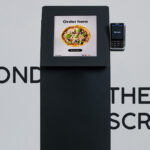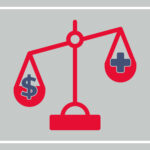Published by
How AI is changing the game for food service operators
Running a restaurant has always been a hands-on business, and the entrepreneurs who start it have often relied on instinct to understand customer desires. Many operators, not surprisingly, have resisted technology, but gradually, they’re accepting that data analysis can help, from scheduling and inventory control to loss reduction and marketing. As artificial intelligence brings more powerful analytical tools to the forefront, restaurateurs are beginning to see that it can be a game changer.
“It’s a huge competitive advantage,” says Peter Newlin, chief vision officer for the Denver-based Gastamo restaurant group and an early AI adopter.
“This is the most disrupting thing that has hit the restaurant industry,” he says. Many operators agree: Restaurant software company Restaurant365 recently reported that 41% of its customers were planning to invest in AI sales forecasting and scheduling tools, and 31% plan to invest in AI-driven inventory and purchasing tools.
Here’s a look at some of the ways this rapidly changing technology can make it easier for operators to predict what will happen in their restaurants.
Predicting Customer Behavior
It’s a rainy, cold Tuesday, so it’s likely to be a slow day in your restaurant, but orders of soup may be high. But wait. There’s a championship basketball game at the nearby high school, and hungry teenagers may want burgers and fries. However, fans from the opposing team are vegan and have a penchant for strawberry shakes made with that coconut milk-based frozen dessert, and their parents are heavy post-game decaf drinkers. Also, there’s an Elk’s Club convention in town, and the Filipino contingent staying at the hotel around the corner likes plain white rice.

AI can process the information and make highly educated guesses about what guests will order. It’s customer demand forecasting that can be used to orchestrate all the restaurant’s activities that ultimately improve the bottom line.
Beyond that, AI facial recognition technology can recognize repeat customers as they walk through the door, allowing it to alert the host who knows to welcome them back. AI could also have recorded that guest’s table preference and what they’re likely to order. “That already changes the emotional reaction of the customer,” says David Lance, head of technical consulting for restaurant consulting firm Bottle Rocket.
Conversely, if the customer is new to the restaurant, the server can be alerted so they know the guest might need more, he says. “There are new technologies out there understanding facial expressions and things like that, that can read mood and micro-expressions like an eye twitch or raising the corner of your mouth,” Lance says. AI can then alert servers or management if a table is unhappy.
“With operations in many markets, AI can help track customers no matter what cities they’re in so they can have the favorite cocktail of a regular in New York City ready when she visits one of their restaurants in San Francisco,” says Scott Gingerich, head of the restaurant and bar team at IHG Hotels and Resorts.
“It also can help with upselling,” says Jay Ruparel, co-founder and CEO of VOICEplug AI. Based on past orders, it can predict additional menu items a guest may like. “We have built 12 different algorithms for upselling, depending on their food choices of the past and their profile,” he says. The time of day and day of the week can also be factored. For example, customers might be more likely to indulge in dessert or have an extra drink close to the holidays.
Improve Kitchen Efficiencies
Ruparel says the technology he uses can calculate the average time it takes customers to order, as well as how they’re spending that time, such as looking at the menu, customizing their order or asking questions. That information then helps the kitchen predict workflow behind the line.
Additionally, AI can register the frequency that a customer asks for a certain item that the restaurant doesn’t have, such as onion rings or espresso martinis. “That really can help the restaurant know some of the items that people are demanding,” he says, as well as indicate which items that have been removed from the menu should be brought back.
AI can also monitor the kitchen to ensure the food is made consistently, Lance says. “What if we had an AI that watched the cook and told them they put too much sauce on a dish (for example)?”
Inventory Management
Traditional AI (not generative AI) would be the best tool for labor and inventory optimization here. I would highlight the improvements in customer demand forecasting that can be used to then orchestrate all the restaurant activities (including ordering and labor/staffing).

AI can use data such as the weather, holidays or spring break to dial in inventory better using historical data of individual restaurants or for a neighborhood in real time, Lance says. It can also detect anomalies that can alert operators to fraud early on. More perishable items can be dialed in more accurately to reduce waste as well.
“I can see it being useful in chains and larger operations where you have a collection of data over time and it gives you ideas of what to expect,” says Simon Dolinky, director of culinary development and support for Kimpton Hotels and Restaurants. He hasn’t used predictive modeling for ordering but expects that technology will trickle down from larger organizations.
Menu Optimization
AI can pull product mix, costing each item, calculating its contribution item and recommending prices and portion size, Gingerich says. “It could save our team a ton of time.”
It could also analyze a restaurant’s PMIX (product mix report) and determine what’s not pulling its weight on the menu and therefore should be removed, Newlin says.
It’s unclear whether AI could assess that such an item might be necessary on the menu to prevent a veto vote from a large party. For example, a vegetarian item might be necessary to please the vegetarian customer, and therefore allow all that customer’s friends to eat in the restaurant as well, making it valuable even if its sales aren’t huge.
But technology can track requests for menu items that it doesn’t currently offer, Ruparel says. It could also be helpful scouting new locations to determine what’s popular in a particular neighborhood. But it messes up sometimes.
AI had recommended that a restaurant for a hotel they were opening in Palo Alto, California, should be vegetarian or vegan, a concept that wouldn’t work in a hotel and might not appeal to most tech workers. However, the suggestion made it clear that numerous vegan or vegetarian items should be offered in that restaurant, Ruparel says.
Improve Staffing
AI can help gauge employee performance, tracking engagement time with customers, upselling and average checks.
“You can use AI to almost coach an employee in real-time to ensure that each interaction is optimal,” Lance says.
Predictive modeling also can help determine more precisely the staff required for all or part of a specific shift.
The caveat, however, is data. Technology already exists to measure sales and labor costs and staffing levels, as well as tracking who should be scheduled, and who should not be scheduled because they’d qualify for overtime.
“All of this data exists out there … the restaurant industry just hasn’t utilized it” for AI, says Gingerich.
Share:
Categories
tags
Related Posts


The Great Big Budget Cut: Prioritization


